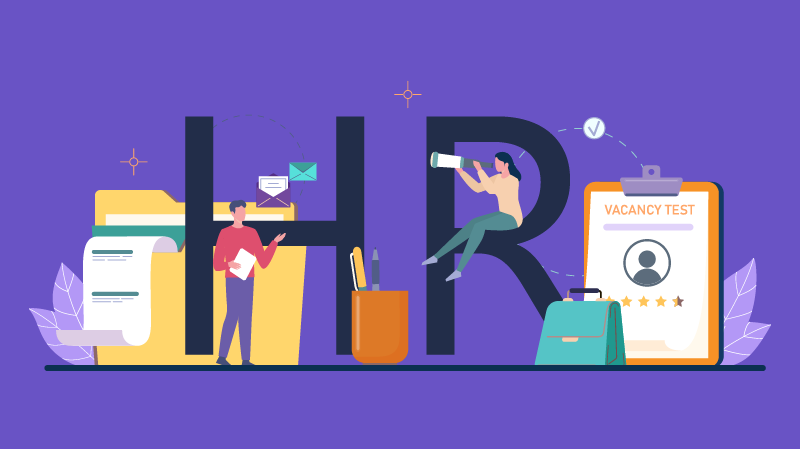Diversity, Equity and Inclusion in the Workplace
Diversity, Equity and Inclusion in the Workplace
Many workplaces today focus on DEI instead of D&I. DEI stands for Diversity, Equity, and Inclusion.
Equity has become just as crucial as I&D in several global companies. Equity in the workplace refers to fair and impartial processes and outcomes for each individual in the company.
Inclusion and Diversity, popularly known as I&D, is gaining momentum in the corporate world. More and more companies are focusing on being diverse by incorporating I&D policies at all workforce levels.
However, making your company inclusive and diverse is much more than a matter of ethics. It is also a driving force of growth, revenue, and profit.
As a business imperative, every person has the responsibility to create and sustain an inclusive environment. Inclusion and diversity are fundamental to our culture and core values. We believe that no one should be discriminated against because of their differences, such as age, ability, ethnicity, race, religion, gender, gender identity and expression or sexual orientation.
What we believe
Our purpose is to deliver on the promise of technology and human ingenuity and our commitment to our people, clients and communities is to accelerate equality for all.
It enables us to attract, develop, inspire and reward top talent. And it creates an environment that unleashes innovation, allows our people to perform at their very best and underpins a culture in which everyone feels they have an equal opportunity to belong and build a career.
This commitment starts at the top with our chief executive officer and Leadership team. And we expect leaders at all levels to help create and sustain a culture of equality where everyone can advance and thrive. Our areas of focus include gender, ethnicity, religion, and cross-cultural diversity.
How we foster a culture of equality
To help our people thrive, we offers robust programming including specialized training, networking support, flexible work arrangements, mentoring mental health sessions, equal benefits to all the employees.
We also believe deeply in the open communication and transparency, so we set goals, share our workforce demographics publicly in key geographies, and collect data to continuously improve and hold our leaders accountable.
What is Diversity and Inclusion?
Diversity and Inclusion refer to the set of strategies, policies, and missions adopted by a company to create and encourage an inclusive workplace that attracts a diverse pool of talent from various cultural backgrounds.
Apart from being a business advantage, companies with D&I policies and practices are more creative and supportive of different voices, thus attracting the top talent in any industry.
Although clubbed together, diversity and inclusion are two different terms. Let’s understand separately.
What is Diversity?
Diversity in the workplace refers to an organization’s workforce comprising people from different genders, sexual orientations, religions, races, ethnicities, ages, etc.
The Different Diversity Types in the Workplace
There are different types of diversity in the workplace. While some are visible to the world, others are much more internal. Some can be controlled and changed, and still, others remain the same.
Here are the different types of diversity dimensions that you will find in any workplace:
- Internal: Race, Age, Ethnicity, Cultural diversity
- External: Education, skill & interest, Religion, Geographic location, citizenship
- Organizational: Work location, job function, department etc
- World View: Political beliefs, cultural benefits etc
What is Equity?
Whereas diversity refers to all the many ways that people differ, equity is about creating fair access, opportunity, and advancement for all those different people.
What is Inclusion?
Inclusion in the workplace means ensuring that every employee feels included and a part of the team. An inclusive workforce will feel valued, seen, heard, and respected. Consequently, we will notice a boom in innovation, higher cooperation, and increased employee engagement.
Ways to Improve Inclusion and Diversity in the Workplace:
Building a diverse and inclusive workplace has become a crucial part of a company’s overall growth and development.
So, the HR and office administration of our company must take tangible steps to create a workplace that is committed to diversity and inclusion.
Here are a few inclusion and diversity best practices for 2023:
1. Educate People In Leadership Positions
As an HR practitioner, we must introduce and lay down strategies for our company’s I&D policies. However, it’s always questionable whether company leaders consider these diversity and inclusion efforts to be essential to the company.
Thus it is crucial to hold educational sessions and meetings in the workplace, where these concepts are explained and discussed in detail. People in managerial and executive roles need to internalize an inclusive attitude to deal with a diverse workforce. They need to be held accountable for their words, decisions, and behaviors so that they can lead by example.
2. Focus on Hiring Diversely
Diversity starts with the hiring and recruiting process.
It is essential to consciously reach out to underrepresented groups while we are recruiting for our company. Diversity and inclusion is a conscious decision, and not something that happens by chance.
When we hire more women, people of color, differently-abled people, etc., we are welcoming a pool of untapped talent and perspective into our company culture.
Implementing diversity hiring in our organization can result in a bigger and better talent pool, encourage different perspectives, and enhance collaboration.
3. Replace Culture Fit with Culture Add
A Culture Fit approach focuses on familiarity. It encourages more of what is already working. On the other hand, a Culture Add approach focuses on welcoming new voices and talents that will positively impact the company culture.
The Culture Fit approach limits or somewhat lacks diversity. It prohibits a company from welcoming new talent.
With the Culture Add mindset, both employers and employees can address their own unintended and unconscious biases that come into play while making decisions.
4. Connect and Communicate
One of the best ways to have an inclusive company culture is through constant communication and connection. Every employee at every level should feel included in the process. Reach out to them, hear what they have to say, empathize, and learn where their ideas are coming from.
In today’s digital working spaces, constant communication has taken prime importance. Make sure we are accessible to your employees, especially the ones working remotely. Practicing and incorporating diversity and inclusion values through constant communication is central to the remote working culture’s smooth functioning.
6. Diversity and Inclusion Training
Employees from all levels must undergo inclusion and diversity training at their workplace.
Such activity will educate both employers and employees on how they can best work with people from different religious, geographical, racial, and socioeconomic backgrounds.
Diversity and Inclusion Training will make our employees more aware. They learn specific skills that help them to communicate and collaborate better.
7. Encourage and Enable Creativity and Innovation
One of the most significant advantages of a diverse workforce is the increased creativity and innovation in the workplace.
Employers should do their best to encourage employees to bring out their best creative and innovative ideas to the table. This will make employees feel seen and appreciated.
8. Keep a Check on Inclusion and Diversity Initiatives
To have effective I&D Initiatives in place, leaders need to check on these initiatives from time to time.
The best way to measure if a company’s I&D strategies are effective is by measuring metrics like employee productivity, employee morale, and employee engagement. These metrics should give a clear picture of how accepted, appreciated, and welcome employees feel in their organizations.
Benefits of Fostering Diversity and Inclusion in the Workplace:
- Higher Employee Engagement
- Higher Innovation
- Increased Revenue & Profits
- Better Decision making
- Higher Employee Retention
- Boost to company reputation



